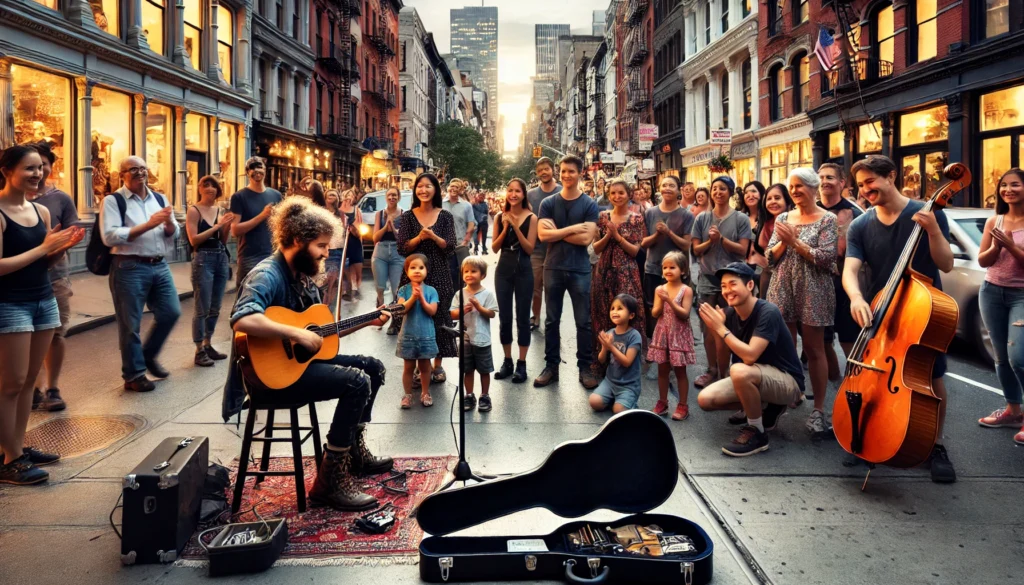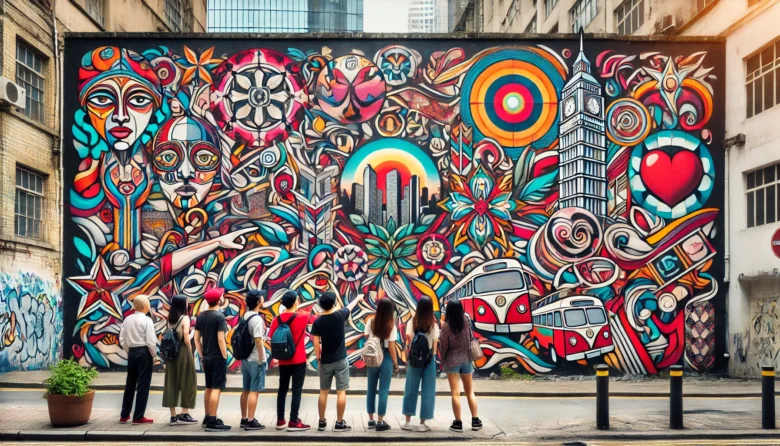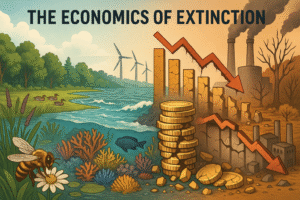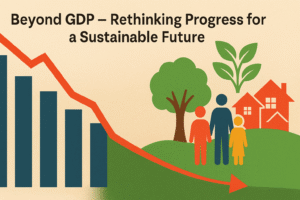Did you know that Banksy’s Street art has added millions of dollars to the real estate value of buildings where his murals appear?
Art and culture have always been at the heart of human expression, but there’s an underground world where creativity and commerce intersect in unexpected ways. The “Underground Economies of Art and Culture” thrive outside mainstream systems, influencing everything from tourism to technology. These informal markets often challenge the boundaries of legality while pushing innovation and shaping trends.
The Hidden Value of Street Art
Street art, once considered vandalism, is now a billion-dollar industry. Underground artists like Banksy have redefined how we view public spaces, turning urban walls into priceless canvases.
Banksy: The Rebel Economist
Banksy’s works often carry political messages and appear in random locations, yet they’ve sparked a global market. Entire neighbourhoods in cities like Bristol (UK) and New York have seen an economic revival driven by tourists eager to see his art.
- Case Study: The sale of Banksy’s shredded artwork “Love is in the Bin” for $25.4 million (Sotheby’s, a major auction house, facilitated the sale) demonstrates how underground art can transform into high-value assets.

Indian Context
In India, cities like Mumbai and Delhi are embracing street art festivals like St+art India, which are revitalizing urban landscapes and attracting both locals and tourists. While these events are celebrated, many street artists still operate in anonymity, earning money through private commissions or guerrilla campaigns.
Music and the Underground Scene
The underground music scene has long been a breeding ground for innovation, influencing mainstream genres and trends. From punk rock in the 1970s to the rise of electronic music, these movements began in basements and warehouses before dominating global charts.
Piracy and the Digital Underground
While piracy is illegal, it has played a role in democratizing music access. Platforms like Napster in the early 2000s (a file-sharing service that disrupted the music industry) allowed indie artists to bypass traditional labels, eventually giving rise to platforms like Spotify.
- Anecdote: Indian rapper Divine started in the underground hip-hop scene in Mumbai, using YouTube to reach an audience. Today, he’s a mainstream artist collaborating with global labels.
Economic Impact
Even in its underground state, music generates income through live gigs, bootleg recordings, and fan-funded projects, sustaining small communities of artists and enthusiasts.
Cultural Subcultures: Fashion and Identity
Subcultures like goth, punk, or streetwear have historically operated outside traditional markets, but they’ve heavily influenced mainstream fashion and brands.
Streetwear and Hype Culture
Streetwear, rooted in skateboarding and hip-hop, was once niche but has become a dominant force in fashion. Brands like Supreme started as underground labels and now command long queues and high resale prices.
- Impact on India: Indian startups like VegNonVeg (a streetwear and sneaker brand) are tapping into the underground hype culture, blending global trends with local aesthetics.
Thrift Stores and DIY Fashion
The growing popularity of thrift shopping, where people buy pre-owned clothing, reflects an economic shift. Underground fashion communities often promote sustainability, influencing larger brands to adopt eco-friendly practices.
The Role of Technology in Underground Economies
Technology has blurred the lines between underground and mainstream economies, providing platforms for creators while challenging existing systems.
NFTs (Non-Fungible Tokens)
Artists are now selling digital works as NFTs, bypassing traditional galleries and auction houses. Underground artists, especially digital creators, are using platforms like OpenSea (an NFT marketplace) to reach global audiences.
Social Media as a Marketplace
Underground artists increasingly use platforms like Instagram and TikTok to effectively showcase and market their creations to a global audience. A street artist in Delhi can now sell a mural design to a client in Tokyo with just a DM (direct message).
Ethical and Legal Challenges
While underground economies drive innovation, they often operate in legal gray areas. From copyright infringement in music to unsanctioned street art, these challenges spark debates about ownership and accessibility.
Governments and Policies
Some governments, like Japan, have embraced underground art by commissioning street murals. Others, like Singapore, impose strict penalties on unauthorized public art, stifling creativity.
Conclusion: A New Lens on Creativity
The underground economies of art and culture highlight the resilience and ingenuity of human expression. They remind us that creativity often thrives outside traditional systems, pushing boundaries and inspiring new ways of thinking.
Call to Action: Support local artists, explore thrift stores, or attend a street art festival. By engaging with these underground economies, you’re not just appreciating art—you’re contributing to a movement.
Author’s Note
Exploring underground economies made me realize the incredible potential of grassroots creativity. Whether it’s a mural on a wall or a song on a bootleg CD, these economies deserve our recognition and respect.
G.C., Ecosociosphere contributor.




